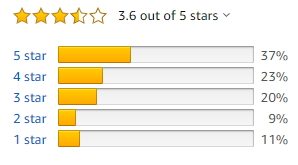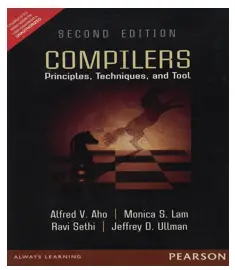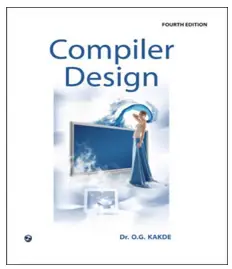Compilers Principles, Techniques & Tools By Aho, Sethi & Ullman
This article reviews the book “Compilers Principles, Techniques and Tools” by Alfred V. Aho, Ravi Sethi, D. Jeffrey Ullman and Monica S. Lam.
The article covers-
- Special features of book
- Analysis of Content
- Analysis of Exercises
- Necessary Instructions
- Conclusion
Why Should Be Read?
Special Features of Book-
The special features of this book are-
- It is the best book among the few available reference books for this subject.
- It covers much more than what is present in the GATE syllabus.
- It discusses the content in quite clear, simple and lucid style.
- It is suitable for beginners as well as intermediate students.
- It has sufficient number of exercise questions which are high in quality.
Analysis of Content-
The following table analyzes sections of the book that are relevant for GATE-
| Chapter No. | GATE Relevant Sections | GATE Topics Covered |
| 1 | All Sections | Introduction to Compilers |
| 2 | All Sections | Basics of Syntax Directed Translator |
| 3 | 3.1 to 3.5 | Lexical Analysis and Tokens |
| 4 | 4.1.1 | Introduction to Syntax Analysis |
| 4.1.2 | ||
| 4.2 | Context Free Grammars
(Overlaps with Theory of Computation Syllabus) |
|
| 4.3 | ||
| 4.4 | Top-Down Parsing | |
| 4.5 | Bottom-Up Parsing | |
| 4.6 to 4.9 | LR Parsing and Parser Generators | |
| 5 | All Sections | Syntax Directed Translation |
| 6 | 6.1 | Directed Acyclic Graphs |
| 6.2 | Three Address Code | |
| 6.6 | Control Flow and Backpatching | |
| 6.7 | ||
| 7 | 7.2 | Stack Allocation & Accessing Data on Stack |
| 7.3 | ||
| 7.4 | Heap Management |
Covering Only These Sections Is Enough
Analysis of Exercises-
The following table analyzes exercises of the book that are relevant for GATE-
| Chapter No. | Question No. |
| 1 | 1.6.1, 1.6.2, 1.6.3, 1.6.4 |
| 2 | 2.2.1 to 2.2.6, 2.3.1 to 2.3.5, 2.4.1, 2.6.1 to 2.6.3 |
| 3 | 3.1.1, 3.3.2, 3.3.3, 3.3.5, 3.3.6, 3.3.7, 3.3.9, 3.3.10 |
| 4 | 4.2.1 to 4.2.8, 4.3.1 to 4.3.3, 4.4.1, 4.4.3, 4.4.4, 4.4.5, 4.4.6, 4.4.7, 4.5.1 to 4.5.3, 4.6.1 to 4.6.7, 4.7.1 to 4.7.5, 4.8.1 |
| 5 | 5.1.1 to 5.1.3, 5.2.1 to 5.2.5, 5.3.1 to 5.3.3, 5.4.2 to 5.4.6, 5.5.1 to 5.5.5 |
| 6 | 6.1.1, 6.1.2, 6.2.1, 6.2.2, 6.2.3, 6.6.1, 6.6.3, 6.6.4, 6.6.5, 6.6.6, 6.7.1 to 6.7.3 |
| 7 | 7.2.1 to 7.2.5, 7.3.1, 7.3.2, 7.4.1 |
Practicing Only These Exercises Is Enough
Necessary Instructions-
Keep the following instructions in mind while reading the book-
- The book has nearly 1000 pages.
- So, be selective and read only the relevant sections from the book.
- If you follow the GATE syllabus, the number of pages reduces significantly.
- Target code generation and code optimization are no longer the part of syllabus.
- From the past 2-3 years, the weightage of this subject has reduced.
- In last previous years, there have been hardly one or two questions asked.
- So, prepare accordingly keeping in mind the weightage of this subject.
- The exercise questions of this book are at par with the level of questions asked in the GATE exam.
- Practicing exercise questions along with previous year questions is sufficient to perform excellent.
Conclusion-
- This textbook covers many more topics than those mentioned in the GATE syllabus.
- Reading in accordance with the above discussed sections ensure all the topics are covered.
- The exercise questions are excellent for practice while preparing for GATE.
- This book is a must read for students to understand how a compiler actually works.
| THIS BOOK IS SELF-SUFFICIENT FOR GATE EXAM. |

Amazon Rating
Student’s Reviews-







Other Recommended Books-
Compiler Design By O.G. Kakde-
Summary

Article Name
Compiler Design Aho Ullman | Best Compiler Design Books
DescriptionCompiler Design Books for GATE CSE- Compilers Principles, Techniques and Tools by Aho, Ravi Sethi and Ullman is the best Compiler Design book for GATE CSE. Compiler Design by O.G. Kakde is another recommended book.
Author
Akshay Singhal
Publisher Name

Gate Vidyalay
Publisher Logo



